Reality is a funny old thing, isn’t it? For starters, everyone thinks they know what it is. We all have clearly defined ideas of what is ‘real’, and what is ‘a bridge too far’, and while there is some degree of variance between individuals, on the whole there is still something of a consensus.
This my good people, is what is known as “consensus reality”.
Examining Consensus
I’ll admit, the first time I heard the term “consensus reality”, it somehow managed to make all the sense in the world, and also sound like bullshit all at the same time. It just sounds like one of those terms that crazy people make

up, that sound scientific, but really are not.
However, when you think about it, and especially in the context of what we know about how the brain perceives and stores information, it makes a lot of sense.
You see, consensus and prior experience (which is also subject to consensus) provide the framework for how we perceive and remember the world around us. This is part of why the Overton Window is such a big deal. Because if you shift the consensus, then you shift the very framework through which people perceive and interact with the world. (Those “culture wars” don’t look so fucking stupid now, do they?)
But how does this all work?
From Senses to Storage
Our senses take in a lot
of information per second. According to the Hungarian-American psychologist, Prof. Mihaly Csikszentmihalyi, we take in around 2 million bits of information per second through our five senses. Now that’s a massive amount of information, and so it’s probably no surprise that the brain cannot store it all. After all, the brain is like any other storage device – it has finite capacity.
So what does the brain do?
Well, this is where the conscious mind steps in and basically edits, deletes, distorts, and generalizes this information down to a more reasonable 134 bits per second.
Or does it?
There is some disagreement as to the amount of compression taking place here, with the Encyclopedia Britannica citing a compression ratio of 11 million bits of information perceived to 50 bits stored. Which suggests that we remember even less about what we perceive than believed by Prof. Csikszentmihalyi.
The Editing Room
So how does our conscious mind decide what to store and what to dump?
Multiple studies suggest that interpretation and storage of information is massively influenced by prior knowledge and experience. In other words, we interpret what we encounter and build a complete picture of our world, from within the framework of what we think we already know.
This is also where consensus comes in, as part of that prior knowledge is informed by consensus. It is quite literally the ‘style guide’ for your brain’s internal editor.
So when I see arguments online about “reality” that are largely based in the enforcement of the scientific materialist consensus that has dominated for so long, I can’t help but roll my eyes.
Why?

Because if you hold to that consensus strongly enough, a fairy could literally skate by you wearing a tutu and leg warmers, with big, flashing lights saying “I’m here!”, and it wouldn’t matter because your brain would just edit it out anyway. It would just be another bit of information out of 2-11 or so million that just gets edited out within less than a second. You wouldn’t even know you’d seen it. Hardly makes you an arbiter of reality, right?
Let’s not kid ourselves here, there is no objective reality when it comes to your senses and what is stored. If anything, the consensus that people cleave to is probably best thought of as being something akin to the Matrix. So why not go ahead and trust your senses (after you’ve ruled everything else out)? Well you know, as long as they’re not leading you to do something harmful to yourself or others…
Hacking ‘Reality’
However, unlike the Matrix, both the brain and consensus are somewhat “hackable”. All you really need to do is just change the narrative and keep repeating the same narrative until it becomes the prior knowledge that “everyone knows”. This is basically how people like Donald Trump get entire groups of people to believe in things that would have been considered too ridiculous to consider even five years ago.
This is also how you can consciously choose to change your perception. Ever wonder why some people always see weird shit and others don’t? It’s all down to perception and the ‘style guide’ your conscious brain editor is working to.
In my opinion, this is a big part of why you see some of these ‘trends’ in the kind of phenomena that people report experiencing around the same time  that entertainment media is focusing on similar things. Are people really seeing that stuff, or are those things arising from the energy and belief of the consensus and becoming entities in their own right? Who knows? It’s kind of like Schroedinger’s cat in that we just don’t know and cannot know without somehow opening “the box”. But ultimately it doesn’t matter either – especially for magic workers. Because we tend to have to work with what we encounter, in the form in which we encounter it, and at the time when we encounter it regardless.
that entertainment media is focusing on similar things. Are people really seeing that stuff, or are those things arising from the energy and belief of the consensus and becoming entities in their own right? Who knows? It’s kind of like Schroedinger’s cat in that we just don’t know and cannot know without somehow opening “the box”. But ultimately it doesn’t matter either – especially for magic workers. Because we tend to have to work with what we encounter, in the form in which we encounter it, and at the time when we encounter it regardless.
(As an aside, this is also why it doesn’t matter what fairies originally were. If you don’t work with what they are now, learning from the people who have continued to experience them, then you’re not only being an arrogant dick to the cultures in which these beliefs still survive, you’re also probably going to run into trouble sooner or later. That is if you’re actually encountering them, of course.)
To return to the main point though, this is also how you can work to hack your brain to see more stuff that you may not otherwise see. And you do this by repeatedly and consistently setting down the layers that change your ‘prior knowledge’ about the world and what is possible. In other words, you demolish that “bridge too far” brick by brick.
Unpacking Realities
All of this talk of a somewhat malleable consensus reality though, does beg the question of whether or not there is an absolute reality that is untouched by consensus. A reality that exists regardless and that serves as the foundation upon which all else is built.
Personally, I think this is something that is self-evident. After all, if we are editing things out to fit in with this created reality of the consensus, then it’s
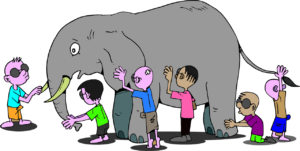
logical that the unedited version is the absolute reality, or at least as much as a human can perceive of it. Moreover, if dogs can smell more than us, and mantis shrimp can see colors we cannot even conceive of, then we can infer that this absolute reality is also beyond human concepts.
But what is this absolute reality?
I don’t know, but I personally believe it is one that is interconnected – that we are all connected in a tapestry of energy, consciousness, or whatever other word best fits here. And that the interplay between absolute and consensus realities is best imagined as being like a glass of milk with melted butter floating on top.
This absolute is beyond concepts and limitless. It is also a state in which a magical practitioner who is able to perceive and manipulate even the smallest portion, would not only have greater wisdom, but also possibly the ability to do some truly wondrous stuff.
There’s just one catch though: if this absolute reality is one of interconnectedness, then if you ever get to that level, it’s a cookie either poisoned or blessed by your actions that we must all ultimately eat.
Thank goodness for that psychic censor, right?

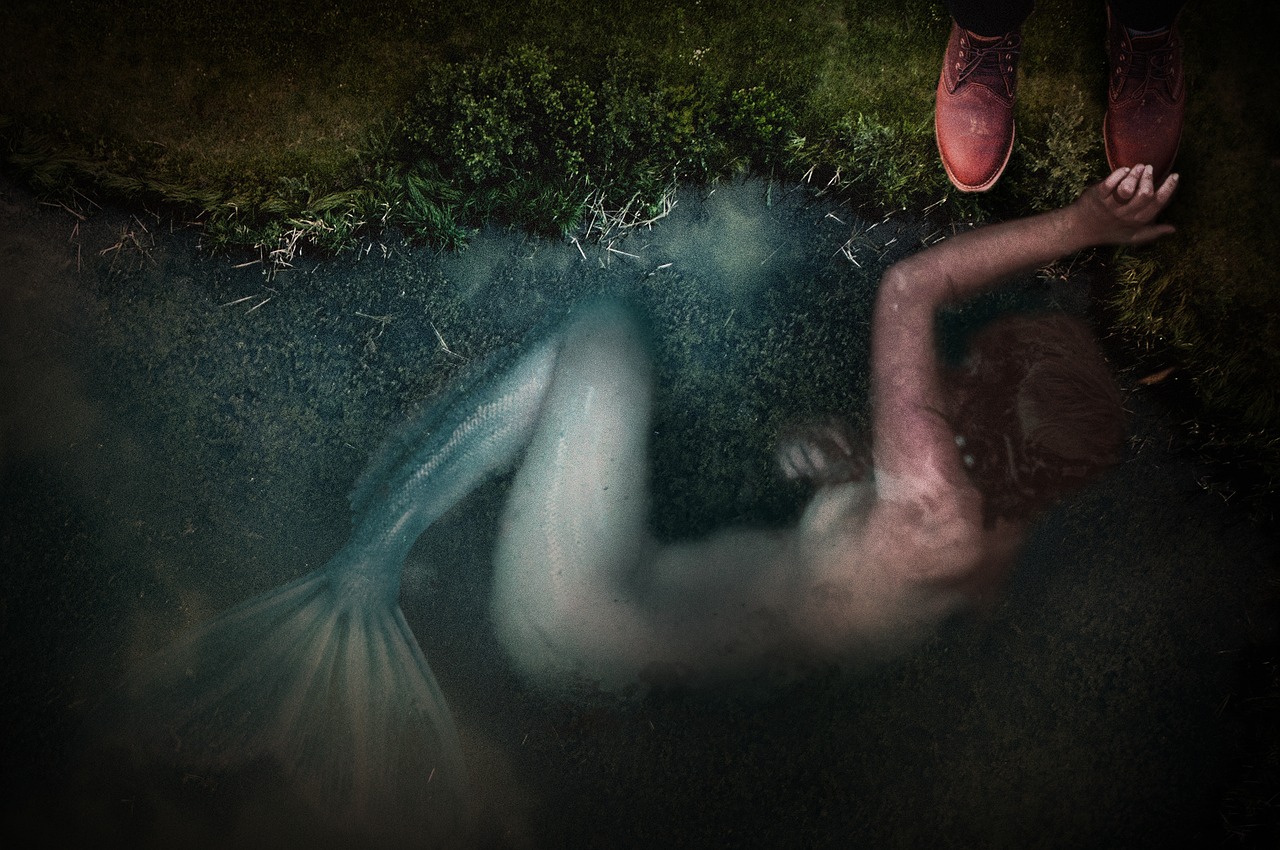


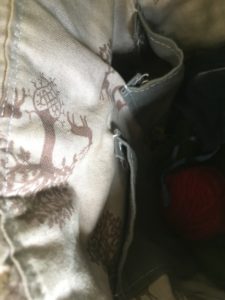
 middle of them, and although I haven’t really found good scholarship on them, my experience has been that these are both effective tools and apotropaics. They’re protective against the Unseen, and allow you – again, in my experience – to see through glamours and things that are normally unseen if you look through them.
middle of them, and although I haven’t really found good scholarship on them, my experience has been that these are both effective tools and apotropaics. They’re protective against the Unseen, and allow you – again, in my experience – to see through glamours and things that are normally unseen if you look through them. general because it has so many uses. You can use it to salt boundaries, protect, and banish. But black salt is just taking regular old salt and leveling it the fuck up! The addition of iron, ash, and (in my case) ground wolf bone, makes black salt an excellent addition to a go-bag. It’s like an apotropaic powerhouse!
general because it has so many uses. You can use it to salt boundaries, protect, and banish. But black salt is just taking regular old salt and leveling it the fuck up! The addition of iron, ash, and (in my case) ground wolf bone, makes black salt an excellent addition to a go-bag. It’s like an apotropaic powerhouse! energy that might “grow up” to get its own ideas and start its own trouble. Spun fiber can provide a bridge, delineate space, and serve as an offering in its own right. I have two spindles that I typically use in ritual work: one is a collapsible spindle that fits in my bag; and the other,
energy that might “grow up” to get its own ideas and start its own trouble. Spun fiber can provide a bridge, delineate space, and serve as an offering in its own right. I have two spindles that I typically use in ritual work: one is a collapsible spindle that fits in my bag; and the other,  my large one, was a gift to thank me for help given. I adore my large one because it feels weighty and authoritative – like a wand. It’s something I’ve wielded in ritual before now when opening portals and working my will. The collapsible one lives in my purse (yes, it’s that small) along with the sheep knuckle I use for yes/no divination.
my large one, was a gift to thank me for help given. I adore my large one because it feels weighty and authoritative – like a wand. It’s something I’ve wielded in ritual before now when opening portals and working my will. The collapsible one lives in my purse (yes, it’s that small) along with the sheep knuckle I use for yes/no divination. resonance to this item that just works. I’ve engraved it with words of power (which I won’t show here), and it’s one of my favorite spirit weapons for subduing, setting up some hardcore protective space, or for when things go bad. I don’t know whether it’s wholly iron or steel (which is mostly iron anyway), but it’s kickass anyway.
resonance to this item that just works. I’ve engraved it with words of power (which I won’t show here), and it’s one of my favorite spirit weapons for subduing, setting up some hardcore protective space, or for when things go bad. I don’t know whether it’s wholly iron or steel (which is mostly iron anyway), but it’s kickass anyway. This is one of my more McGyver-type items. Red thread can be used to bind and protect, or create new items (like a crossroads effigy or protective rowan cross). It can also be used for knot spells, marking off space, and much more. The yarn I use is hand spun with intent and then ritually consecrated.
This is one of my more McGyver-type items. Red thread can be used to bind and protect, or create new items (like a crossroads effigy or protective rowan cross). It can also be used for knot spells, marking off space, and much more. The yarn I use is hand spun with intent and then ritually consecrated.


 accordingly, as I do respect her). I do think she makes an excellent point about the duotheisms held dear by the earlier Pagan revivalists, and their incompatibility with both modern and ancient ideas on deity. But does that mean that we should once more throw out yet another baby with the water it was bathing in? (Which per
accordingly, as I do respect her). I do think she makes an excellent point about the duotheisms held dear by the earlier Pagan revivalists, and their incompatibility with both modern and ancient ideas on deity. But does that mean that we should once more throw out yet another baby with the water it was bathing in? (Which per  I shall go into a hare,
I shall go into a hare,
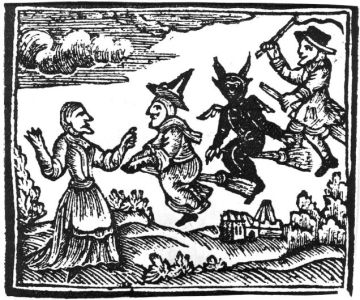
 palm tree, despite the fact that it’s clearly not. Let’s face it, it looks nothing like a palm tree. Now I’m not saying it is a demon (we do live in the era of Photoshop), but what is curious is the vehemence that people are defending the palm tree explanation. This reminded me of something I heard while in a trance once. In the trance I was walking down the street, but it wasn’t just populated by the living and seen, but by everything from ghosts, to faeries, to creatures of a more mythological nature. Weaving in and around the living and seen, they went completely unnoticed, and I was baffled. How could these people just go about their shopping and *not* notice that dragon? Then came the voice. It was not a ‘head voice’ but external, coming with all the force of an air canon.
palm tree, despite the fact that it’s clearly not. Let’s face it, it looks nothing like a palm tree. Now I’m not saying it is a demon (we do live in the era of Photoshop), but what is curious is the vehemence that people are defending the palm tree explanation. This reminded me of something I heard while in a trance once. In the trance I was walking down the street, but it wasn’t just populated by the living and seen, but by everything from ghosts, to faeries, to creatures of a more mythological nature. Weaving in and around the living and seen, they went completely unnoticed, and I was baffled. How could these people just go about their shopping and *not* notice that dragon? Then came the voice. It was not a ‘head voice’ but external, coming with all the force of an air canon.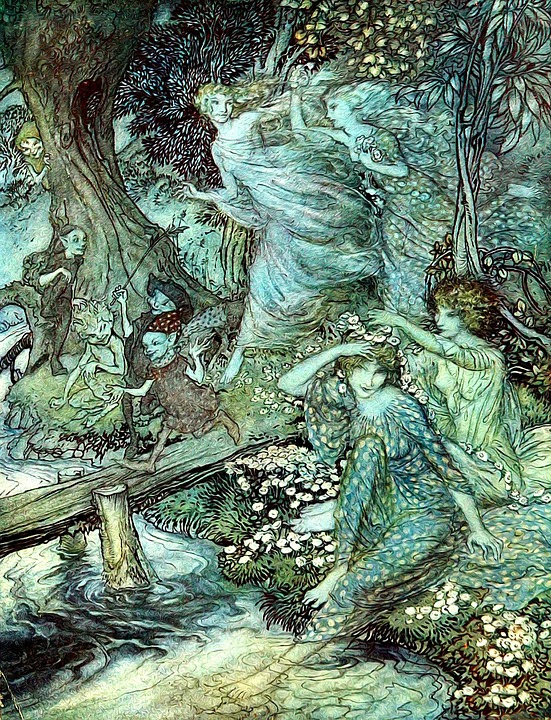
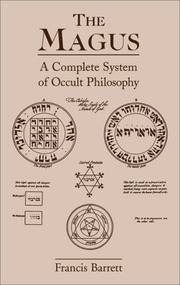 dwelled upon it. Of course, this onion also affects the kinds of Unseen that might be there: the types of Unseen, their attitudes towards humans, how they expect interactions to look, the pacts that were made between humans and Unseen in years past, and the kinds of offerings they like. Sometimes these layers are things that you might expect. After all, who doesn’t expect Native American layers, and other layers made up of mostly Christianity in America? But even in America, there are also often layers that are far less expected – like the layer of occultism derived from
dwelled upon it. Of course, this onion also affects the kinds of Unseen that might be there: the types of Unseen, their attitudes towards humans, how they expect interactions to look, the pacts that were made between humans and Unseen in years past, and the kinds of offerings they like. Sometimes these layers are things that you might expect. After all, who doesn’t expect Native American layers, and other layers made up of mostly Christianity in America? But even in America, there are also often layers that are far less expected – like the layer of occultism derived from 
 In other words, if space is a container for action, actions set down layers (which call other similar actions to themselves), and there is a force that ensures that those contexts are revisited, then it would stand to reason that spaces have ‘patterns’ or contexts that get revisited again and again. Not only that, but these patterns don’t just affect humans; as the first Bauschatz quote says, these spaces-as-containers-for-action also seem to apply other beings too. Or at least that’s the best guess of what Germanic Heathens thought about the matter during the Heathen period.
In other words, if space is a container for action, actions set down layers (which call other similar actions to themselves), and there is a force that ensures that those contexts are revisited, then it would stand to reason that spaces have ‘patterns’ or contexts that get revisited again and again. Not only that, but these patterns don’t just affect humans; as the first Bauschatz quote says, these spaces-as-containers-for-action also seem to apply other beings too. Or at least that’s the best guess of what Germanic Heathens thought about the matter during the Heathen period.
 with; to terrifyingly huge chunks of political discourse and so much more. After a couple of decades at this malarkey, I’m finding the differences to be substantial enough that it’s starting to feel like code-switching when talking to people who aren’t Heathen/Pagan/Witches/Druids, and I didn’t even grow up in a particularly religious home. Seriously, I grew up only vaguely Church of England (cake or death) with a mother who graffitied her bible with the names of the Monkees and a Spiritualist father. I also know I still have a long, long way to go and probably won’t manage to completely throw off that Judeo-Christian worldview in my lifetime. Realistically speaking, this is really a generational game, and NONE of us should feel bad or ‘less’ if we struggle to internalize a concept.
with; to terrifyingly huge chunks of political discourse and so much more. After a couple of decades at this malarkey, I’m finding the differences to be substantial enough that it’s starting to feel like code-switching when talking to people who aren’t Heathen/Pagan/Witches/Druids, and I didn’t even grow up in a particularly religious home. Seriously, I grew up only vaguely Church of England (cake or death) with a mother who graffitied her bible with the names of the Monkees and a Spiritualist father. I also know I still have a long, long way to go and probably won’t manage to completely throw off that Judeo-Christian worldview in my lifetime. Realistically speaking, this is really a generational game, and NONE of us should feel bad or ‘less’ if we struggle to internalize a concept.

 children, but can be made safe with some adaptation. For example, the opened iron scissors hung over a crib can easily be a forged iron troll cross (or anything else that’s iron and not sharp) stuffed under the mattress of the child’s bed (or hung on the wall if the child is old enough), and we really don’t need to go back to testing our children to make sure they’re not changelings (by incidentally torturing or killing them).
children, but can be made safe with some adaptation. For example, the opened iron scissors hung over a crib can easily be a forged iron troll cross (or anything else that’s iron and not sharp) stuffed under the mattress of the child’s bed (or hung on the wall if the child is old enough), and we really don’t need to go back to testing our children to make sure they’re not changelings (by incidentally torturing or killing them).